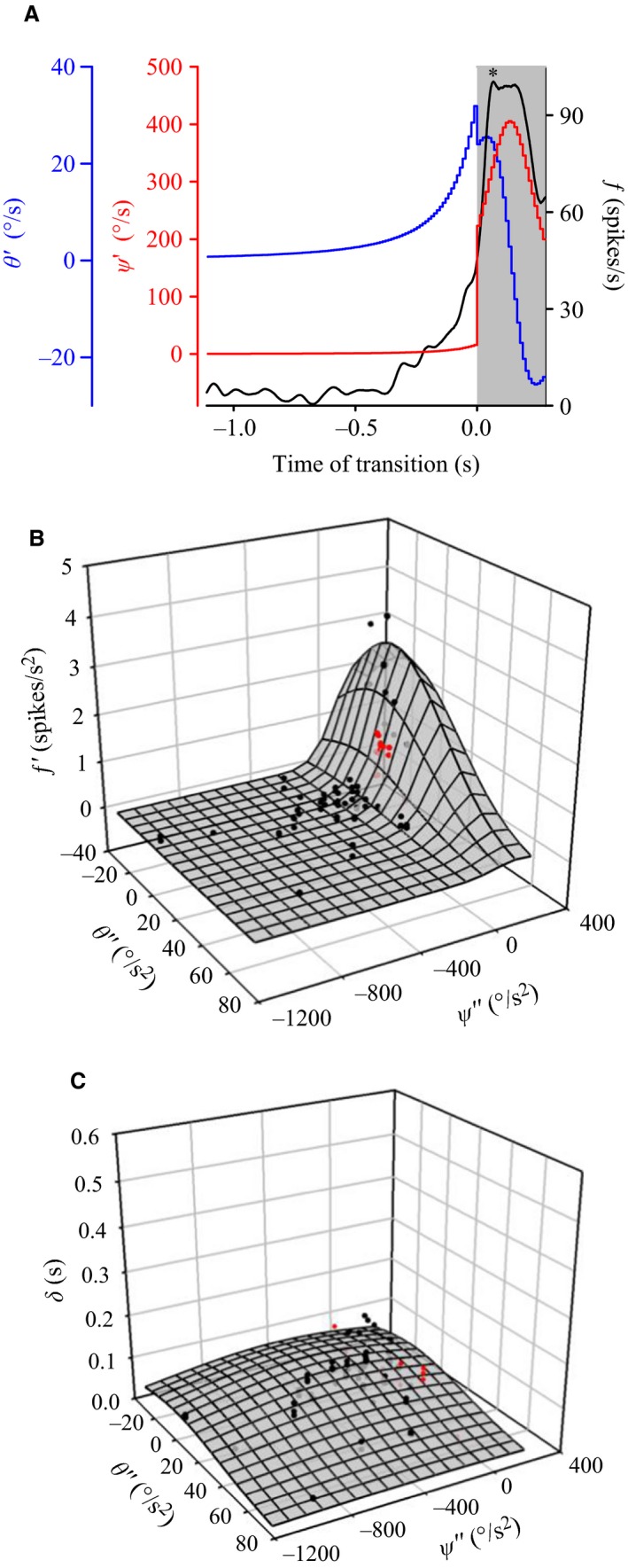Figure 8.

Correlation of DCMD firing modulation with object expansion parameters during transitions toward and away from looming. (A) Sample data illustrating the relationship between: an initial decrease in the object subtense angular velocity (θ′, blue line), increase in the velocity of the angular motion of the leading edge of the stimulus (ψ′, red line), and the resultant change in DCMD firing rate (ƒ, black line). Sample data in response to presentation of a disk along the 0_45 trajectory against a simple background. The gray shaded area indicates the duration when the stimulus travelled along a noncollision trajectory relative to TOT (t = 0 sec). *indicates a transient firing rate increase associated with a transition away from looming (see text). (B) Three‐dimensional scatterplot representing current data for objects transitioning toward or away from looming (red dots) plotted. Black dots represent pooled data from previous experiments (Dick and Gray 2014; McMillan and Gray 2012; Silva et al. 2015). All data were fit to an unconstrained two‐dimensional Gaussian equation (eq. (1), mesh plot, r 2 = 0.72). Data from the mean firing rate change (ƒ′) at TOT were plotted against the instantaneous object subtense angular acceleration (θ″) and the acceleration of the angular motion of the leading edge (ψ″) at the time of transition. (C) Plot of mean response time (δ) to instantaneous object subtense angular acceleration (θ″) and acceleration of the angular motion of the leading edge (ψ″). Data fit weakly to a Gaussian equation (eq. (2), mesh plot, r 2 = 0.18).
